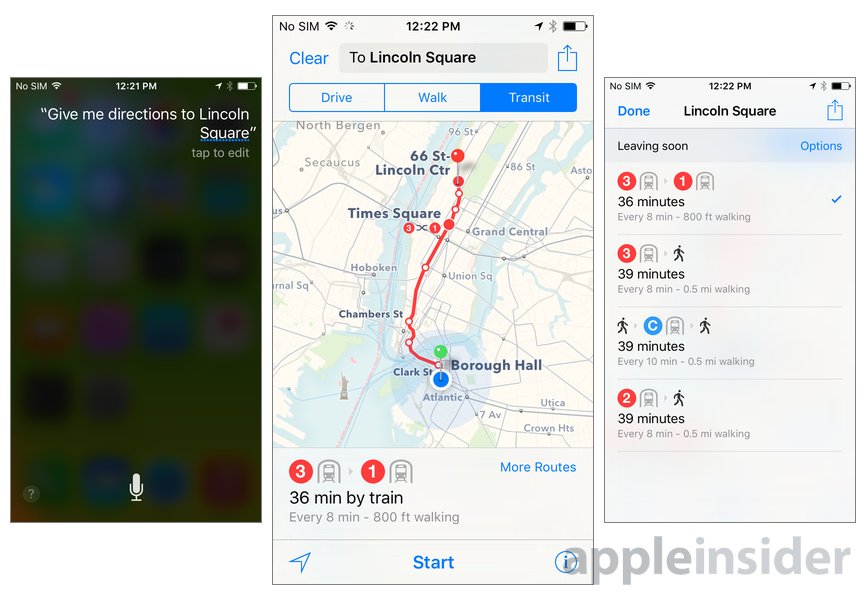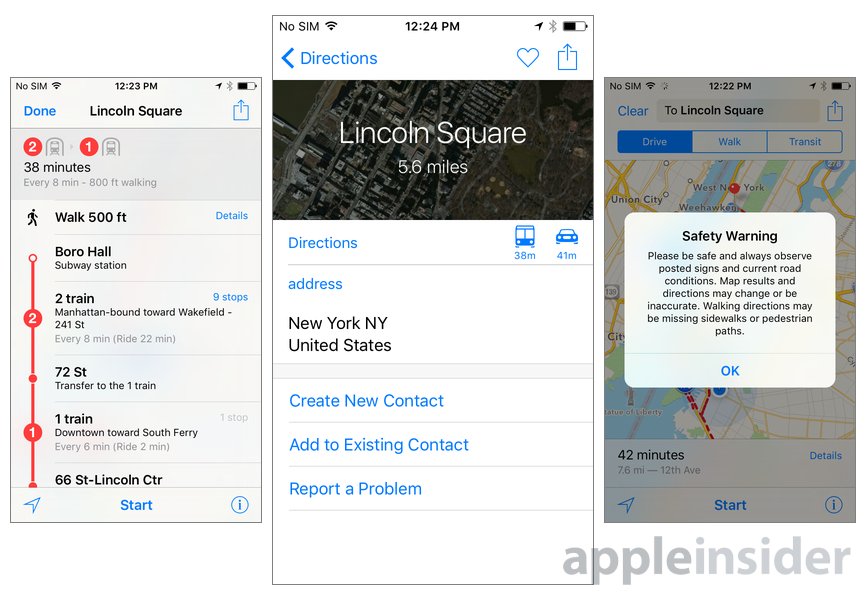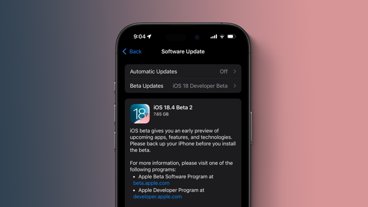For years, the biggest omission in Apple Maps has been the lack of transit directions. But that all has changed with this year's iOS 9 update, which includes built-in support for buses, subways, trains, and more in select major cities.
At launch, transit directions are available in Baltimore, Berlin, Chicago, London, Mexico City, New York City, Philadelphia, San Francisco, Toronto, and Washington D.C. It is also available in 30 cities in China, including Beijing, Shanghai, and Shenzhen.
In those cities, the new transit view offers detailed directions that are customized for each location. These include specific places on the map where the subway entrance may be, or where exactly on the street a bus stop is located.
Like competing transit directions from services like Google Maps, Apple gives users a number of transit options when they search for a location, including different train routes and departure times. Where available, Apple Maps includes the schedules of incoming trains.
Directions can be seen in both a map view and a step-by-step list view. In the detailed list view, users can also check to see every stop along the way, to aid them in their trip.
One feature unique to Apple Maps in iOS 9 are underground maps, which show a sort of bird's eye X-ray view of underground train stations. With this, Apple can show travelers exactly where they should go and where they can exit a subway station, for example.
Users can also schedule future trips with Apple Maps by entering a custom departure time and date, and the system will give users the best possible routes available at that time. Types of transportation can also be included or excluded, such as for those who may not wish to take the bus or subway.
Transit directions in iOS 9 are also compatible with Siri, which means users can simply speak to their iPhone to get the proper directions. Support for Apple Maps transit will also be coming to OS X, meaning a user can plan their trip on their Mac and then follow the route on either an iPhone or Apple Watch.
 Neil Hughes
Neil Hughes









-m.jpg)






 Brian Patterson
Brian Patterson
 Charles Martin
Charles Martin


 Malcolm Owen
Malcolm Owen
 William Gallagher
William Gallagher
 Christine McKee
Christine McKee
 Marko Zivkovic
Marko Zivkovic







43 Comments
Looking forward to using this in
Looking forward to using this in
Craig's mention that Apple Maps was the clear winner among iOS mapping apps just reinforces the fact that the echo chamber here isn't accurate.
Google Maps didn’t appear by magic over night. It took years to build it into what it is today. Apple Maps is still building, still improving and coming along nicely. I personally no longer have any incentive to use Google’s product. Apple Maps has been ‘good enough’ for me for the last year or so. I’m not an urban anthill dweller so transit data wasn’t that important to me. To others this addition will be the incentive to switch.
If Apple can become a serious alternative to Google’s search and map businesses then they will kick Google where it hurts. Various surveys and reports confirm Google needs Apple more than Apple needs Google in terms of revenue and sales. Google Maps doesn’t sell iPhones but iPhones make Google lots of money because people use their services on iPhones.
Hmmmm. In the photos (bottom, center) the one that says Lincoln Square - see an option icon with a car, and one with a transit vehicle. I don't see one with a person. I assume you can get walking directions to places as well????
I would disagree there, a lot of switchers move to IOS because pretty much everything in the Google ecosystem works just as well on IOS devices.